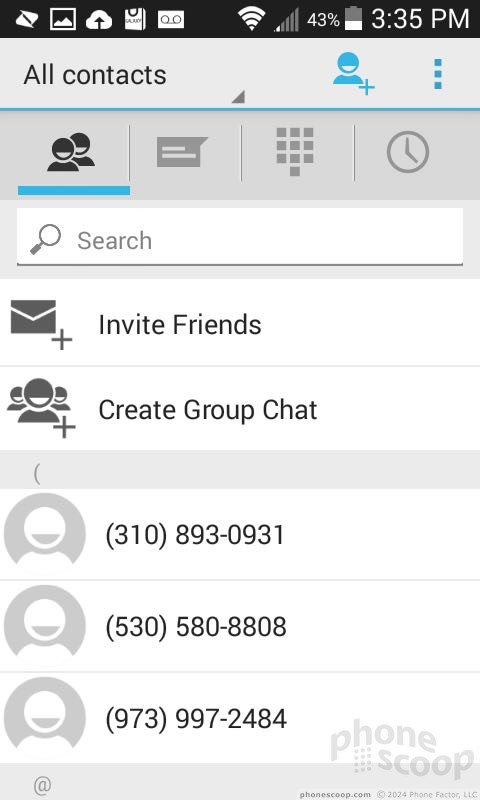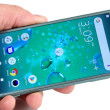Review: Samsung Galaxy Prevail LTE for Boost Mobile
Menus
The Galaxy Prevail LTE runs Android 4.4 KitKat with Samsung's TouchWiz UI on top. The lock screen supports a single shortcut — to the camera — which will work with or without a security lock. You can also choose to have the clock, live weather, and select notifications on the lock screen.
There are just two home screen panels activated by default, but those can be deleted or added to at whim. They are pretty crammed with apps and widgets from Boost Mobile. The dock at the bottom of the screen holds four app shortcuts plus access to the app drawer. You can customize the dock however you like.
The main app menu is fairly flexible. The default view is a grid of apps arranged alphabetically. Apps can be rearranged in any order you wish or dropped into folders. There's no list view available. You can easily hide apps you don't like (although many can't be deleted, only hidden.)
The pull-down notification shade includes toggles for the different radios on the device, such as Wi-Fi, Bluetooth, and GPS. You can arrange the toggles however you like. The notification shade also provides access to the brightness setting, full settings menu, and of course all your alerts. I like that the style mirrors that of Samsung's flagship devices, such as the Note 4 or S5, with round toggle buttons.
The settings menu is colorful and lengthy. All of the items are grouped similarly to other Android devices, with networks and connections lumped together at the top, followed by device, personal and system tools. The Prevail LTE doesn't offer Samsung's "Easy Mode" for novice users.
Last, the Prevail LTE is compatible with Boost's Mobile iD app packs. Users can browse through a collection of iDs that center on select themes (work, play, music, sports). The iD packs include wallpapers, themes, ringtones, and, all too often, garbage-y bloatware.
In terms of performance, the Prevail LTE was a little bit sluggish. The phone relies on Qualcomm's Snapdragon 410 processor, with four cores at 1.2 GHz each and 1GB of RAM. This is the first phone I've tested with the 410 on board. Theoretically, it shouldn't have any trouble running this device smoothly, but in practice, it's a bit disappointing. It's not terribly slow, but it's definitely not fast.
Calls and Contact
The Prevail LTE relies on Samsung's TouchWiz phone application, which is the same across many of its devices. It's got a large software dialpad, with tabs that run across the top for accessing the call history and contacts. It offers some fairly advanced features. For example, you can turn on/off noise reduction, (which dampens background noise so you can hear more easily,) as well as set your own call-rejection messages, and control how the phone answers/ends calls.
The contacts app is accessible from within the phone app, but also stands apart on its own in the app drawer. It syncs with multiple online platforms (Google, Outlook, etc.) and lets you select which groups are visible. As per usual, you can set a direct access shortcut on the home screen, but there's no larger widget for all your favorites. The contact app holds tons of data about each contact and works well with the phone and messaging apps.
Messages
The Prevail LTE has a grab-bag of messaging apps and services on board. Obviously, the stock Gmail, email, messages, and Google+ apps are available. The latest version of Gmail works with most email services and negates the need for the generic email app. The native text messaging app is rather barren, but is functional. Then there's Hangouts, which can handle SMS and IM, but does a mixed job at it. Last, there's Messaging+, a third-party app that's more feature-rich than the stock app and offers group chatting, video calling, and group chatting. It works pretty well.
Facebook and Twitter are not pre-installed.



























 Virgin Announces Samsung Galaxy Core Prime
Virgin Announces Samsung Galaxy Core Prime
 Boost's Samsung Galaxy Prevail Being Updated with LTE
Boost's Samsung Galaxy Prevail Being Updated with LTE
 Samsung's Galaxy A14 Offers 5G for Less
Samsung's Galaxy A14 Offers 5G for Less
 Samsung Galaxy Prevail LTE / Galaxy Core Prime (CDMA)
Samsung Galaxy Prevail LTE / Galaxy Core Prime (CDMA)








